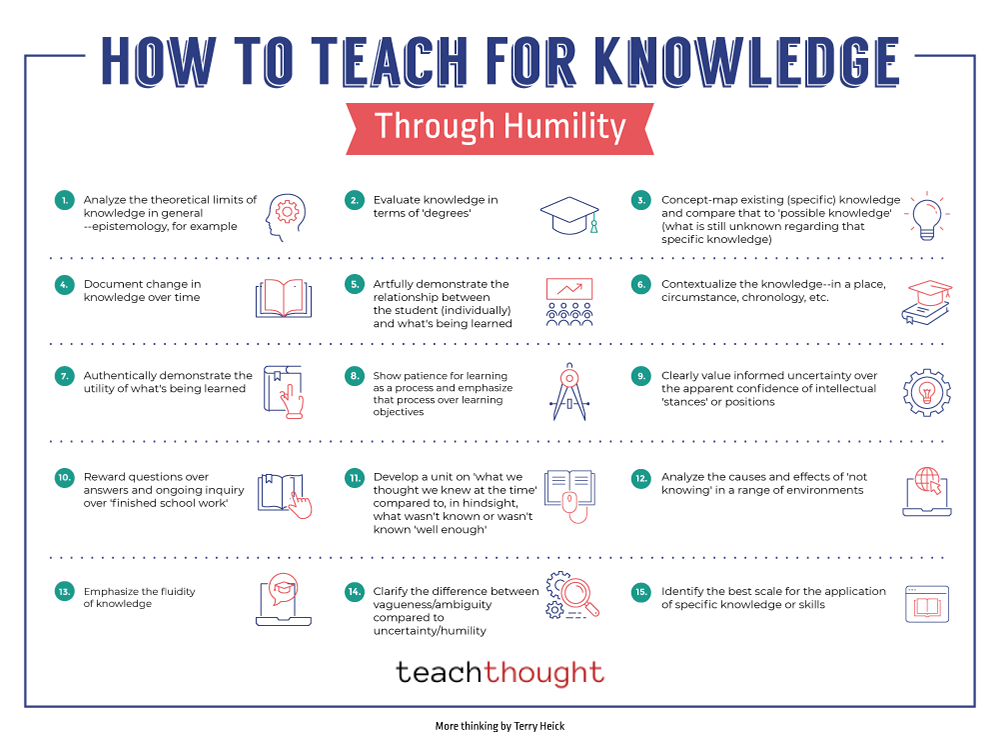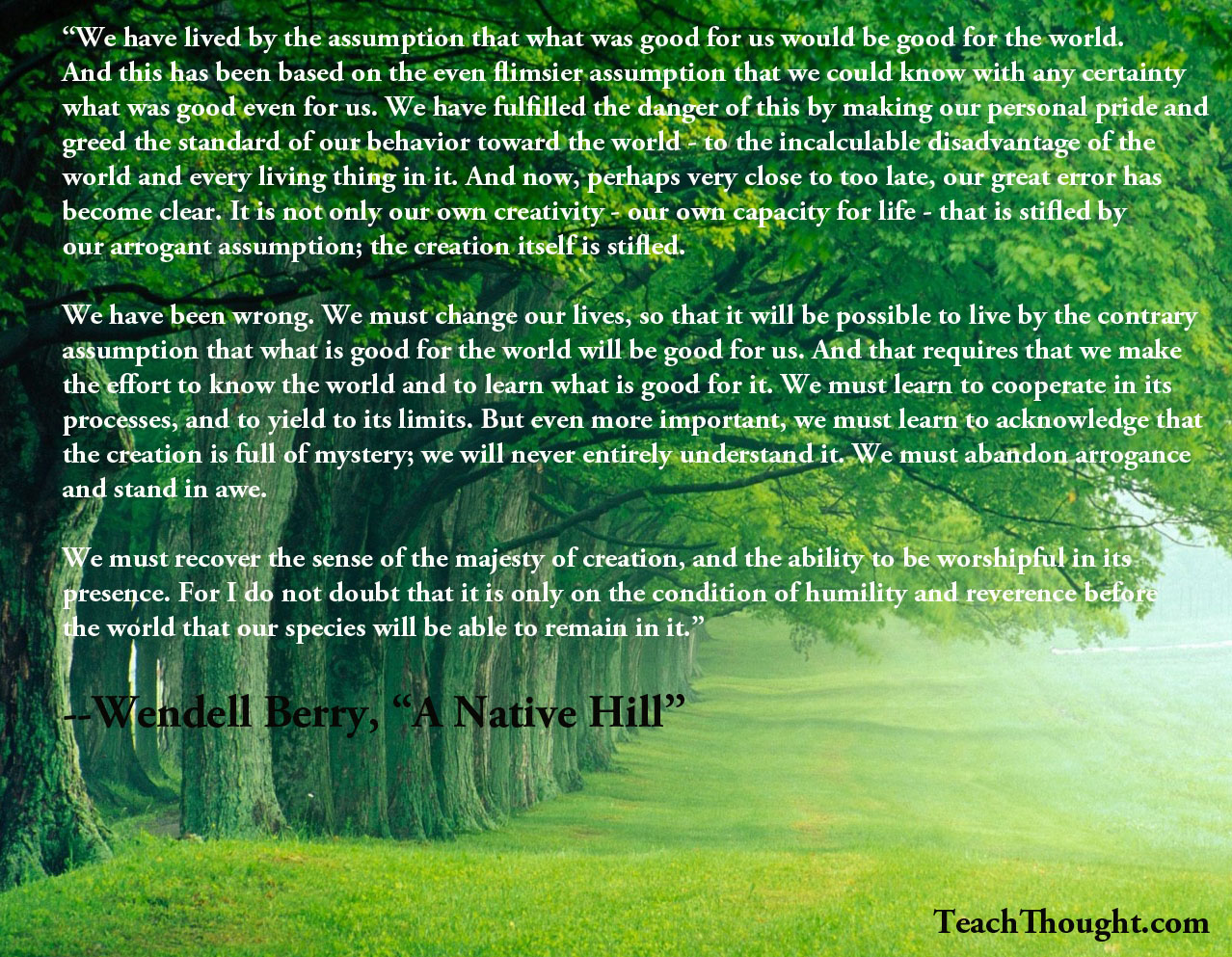
by Terry Heick
Humility is an attention-grabbing start line for studying.
In an period of media that’s digital, social, chopped up, and endlessly recirculated, the problem is not entry however the high quality of entry—and the reflex to then decide uncertainty and “reality.”
Discernment.
On ‘Figuring out’
There’s a tempting and warped sense of “understanding” that may result in a lack of reverence and even entitlement to “know issues.” If nothing else, trendy expertise entry (in a lot of the world) has changed subtlety with spectacle, and course of with entry.
A thoughts that’s correctly observant can also be correctly humble. In A Native Hill, Wendell Berry factors to humility and limits. Standing within the face of all that’s unknown can both be overwhelming—or illuminating. How wouldn’t it change the training course of to begin with a tone of humility?
Humility is the core of vital considering. It says, ‘I don’t know sufficient to have an knowledgeable opinion’ or ‘Let’s study to scale back uncertainty.’
To be self-aware in your individual information, and the bounds of that information? To make clear what will be identified, and what can not? To have the ability to match your understanding with an genuine have to know—work that naturally strengthens vital considering and sustained inquiry.
What This Appears to be like Like In a Classroom
- Analyze the bounds of data in plain phrases (a easy introduction to epistemology).
- Consider information in levels (e.g., sure, possible, attainable, unlikely).
- Idea-map what’s presently understood a couple of particular subject and examine it to unanswered questions.
- Doc how information adjustments over time (private studying logs and historic snapshots).
- Present how every pupil’s perspective shapes their relationship to what’s being realized.
- Contextualize information—place, circumstance, chronology, stakeholders.
- Show genuine utility: the place and the way this data is used exterior faculty.
- Present persistence for studying as a course of and emphasize that course of alongside targets.
- Clearly worth knowledgeable uncertainty over the arrogance of fast conclusions.
- Reward ongoing questions and follow-up investigations greater than “completed” solutions.
- Create a unit on “what we thought we knew then” versus what hindsight exhibits we missed.
- Analyze causes and results of “not understanding” in science, historical past, civic life, or every day selections.
- Spotlight the fluid, evolving nature of data.
- Differentiate vagueness/ambiguity (lack of readability) from uncertainty/humility (consciousness of limits).
- Establish the very best scale for making use of particular information or abilities (particular person, native, systemic).
Analysis Observe
Analysis exhibits that individuals who follow mental humility—being keen to confess what they don’t know—are extra open to studying and fewer prone to cling to false certainty.
Supply: Leary, M. R., Diebels, Okay. J., Davisson, E. Okay., et al. (2017). Cognitive and interpersonal options of mental humility. Persona and Social Psychology Bulletin, 43(6), 793–813.
Literary Touchstone
Berry, W. (1969). “A Native Hill,” in The Lengthy-Legged Home. New York: Harcourt.
This concept could appear summary and even misplaced in more and more “research-based” and “data-driven” methods of studying. However that’s a part of its worth: it helps college students see information not as mounted, however as a dwelling course of they will be part of with care, proof, and humility.
Instructing For Information, Studying By way of Humility



